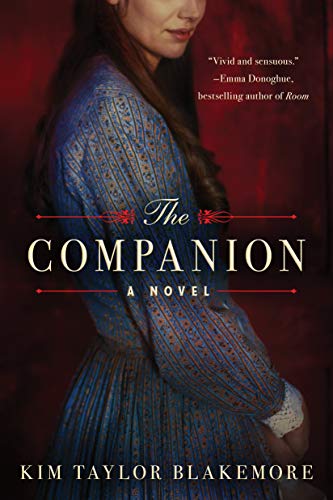The Companion
“Count the bodies. One. Two. Three if we count Mary Dawson. Four if we count my Ned…” Thus begins this atmospheric, gothic novel set in 1850s New Hampshire. Lucy Blunt arrives at the Burtons’ stately country home in the depth of winter to work as a maid. The former maid, Mary Dawson, has been found dead in the river and Lucy has been hired to take her place. Arriving at her new job with forged referrals, Lucy has a past that slowly unfolds throughout the story. She narrates her story from her prison cell, while awaiting her hanging, with snippets of her miserable life and events leading up to her imprisonment.
This novel is about confinement – a prison cell, a house full of locked rooms, a blind woman shut off from the world, society’s confines of class and female expectations. Lucy is a maid-of-all-work, assigned to help Cook with the menial kitchen chores and as a laundress working alongside the other servants: Jacob, Mr. Beede, and John Friday. The blind Mrs. Burton has a companion and caretaker, Rebecca, who falls ill. Lucy is assigned to care for Mrs. Burton, and the two become very close. When Rebecca recovers and returns to her role as companion, the animosity between her and Lucy grows to a ruinous conclusion.
Through Lucy’s eyes, do we see the truth of what is really happening? Is Rebecca as devious and sinister as Lucy portrays her, or is it Lucy that is cunning and menacing? Blakemore’s descriptions are rich and vivid. The cold of the winter seeps into the reader while immersed within the eerie atmosphere. Secrets, eavesdropping, sinister happenings, and a forbidden relationship all make for a riveting historical thriller reminiscent of Sarah Waters, Burial Rites by Hannah Kent, or The Confessions of Frannie Langton by Sara Collins.










